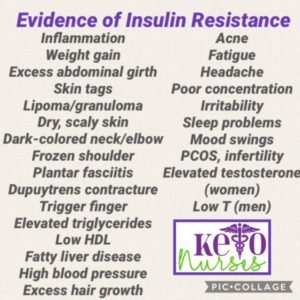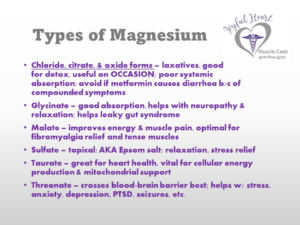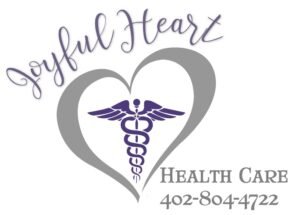In the last article, we discussed the 3 processes that the body uses to metabolize, utilize, and store glucose. In this article, we will discuss several conditions that occur when those processes become overwhelmed and organs are unable to keep up with their usual functions.
First of all, if you haven’t read my “peas and cornbread” article, you should. It’s the primer for this more complex article; without understanding it, this article may become difficult to understand. You can check it out here. https://joyfulhearthousecalls.com/how-did-i-get-fat-how-did-i-get-diabetes-how-did-i-get-so-unhealthy/
If you’ll recall, the blood stream only requires about 4 grams of glucose for 24 hours of normal daily functions and processes. Four grams is the equivalent to 1 teaspoon. You read that correctly… 1 teaspoon of sugar is all the body requires to maintain body systems every day. That is a tiny amount of sugar! Compare that to a day’s worth of intake suggested and recommended by nutritionists, medical providers, and respected non-profit organizations world-wide; most “experts” recommend 45 – 60 grams of carbs per meal (45 x 3 = 135; 60 x 3 = 180) and at least 15 grams per snack twice daily (another 30 grams). The American Heart and Diabetes Associations are highly regarded as experts in guideline recommendations, but how in the world did they come to THIS conclusion? A human needs 4 grams of glucose, yet we have been told for 50 years to consume approx. 200+ grams daily to maintain health. What happens to all the excess?
The excess carbohydrate intake results in a variety of medical diagnoses, but all have one specific problem – insulin resistance. Insulin resistance is the cause of type 2 diabetes (DM2), hypertension, many types of infertility, polycystic ovary syndrome (PCOS), hypertriglyceridemia, various hormone imbalances, a variety of migraines, non-alcoholic fatty liver disease NAFLD), Alzheimer’s, coronary heart disease, and many other conditions. We will discuss here how all of this chaos occurs within.
The human body was designed with multiple back-up systems and methods for overcoming a variety of stressors, including poor nutrition. Looking back over history, we can see periods of great famine where food was extremely scarce, yet people survived. The human race has not gone extinct; our bodies and our organs were designed and well-prepared to face a variety of environmental & nutritional struggles. Yet, we may have found one obstacle we cannot overcome: ourselves.
After reviewing the “peas & cornbread” article, you will see that our bodies have 3 different processes for metabolizing glucose from the carbohydrates we consume. If any of these processes become overwhelmed, another process will be triggered and more glucose is removed from the bloodstream another way. However, if all 3 processes are too busy and struggle to keep up, the human system gets sick. Have you ever known a basement to flood? Did you see a sump pump trying to remove the water from the house? If the rain/flood waters are coming in faster than the pump can remove it, what happens? The flood continues to rise; more damage is done to the home. So it is with overconsumed carbohydrates over time. As high carb intake continues, the pancreas, bloodstream, and liver work overtime trying to remove all the excess glucose. After months or years, the system cannot keep up; organs never get to rest, even during sleep. These overactive processes often contribute to insomnia, which increases body stress, raising glucose even more; it becomes a downward spiral to poor health.
Many patients, when told of their new diagnosis, often say, “but I don’t feel sick.” And it’s very true. The human body is SO GOOD at managing our internal chemistry, the system can become very imbalanced before any symptoms are noticed; some symptoms are subtle and just disregarded. Fatigue, or feeling tired, is often overlooked or ascribed to our busy lifestyles; gaining weight is often attributed to our genes, our lack of exercise, or even to poor nutrition. Forgetfulness is usually attributed to being distracted or just part of normal aging; muscle aches & joint pains are often called fibromyalgia or arthritis. Sugar cravings are seen as the body’s way of getting us to eat something we “need.” Feeling hungry all the time is often seen as poor thyroid function or just staying too busy to eat. I could go on and on with the vague symptoms people report to medical providers during office visits; most of these symptoms are ignored or regarded as “not pertinent” to today’s problem-oriented office visit. Millions of patients world-wide report these types of symptoms on a daily basis, and then when they are finally confronted with a life-altering diagnosis, most seem utterly shocked and surprised. It truly is a shame; I see it regularly and wish I could do something more to help. People do not seem to understand how they could possibly be diabetic or infertile, or have NAFLD when they’ve been eating according to nutrition guidelines for many years, with only occasional “cheats” or unhealthy foods. They come in and complain that no provider ever told them this or that; they report many years of struggling with food addictions and cravings. They even bring brochures and eating plans from other providers and nutritionists, saying, “I eat exactly according to this plan; how can I now have diabetes?”
It all begins with overworking our human systems; while the body is amazing at maintaining the appearance of health, our organs are often taking the brunt of the illness. Every carbohydrate we consume converts into glucose and/or fructose, triggering the pancreas to secrete insulin so that the excess sugars can be removed from the bloodstream because they do not belong there. Over time, the pancreas either cannot keep up and is unable to secrete enough insulin, or it begins to make faulty insulin – insulin that is no longer functioning to move glucose out of the bloodstream. This one organ, the pancreas, can become very ill, resulting in pancreatitis. Difficult to heal, it can take many months or years for the pancreas to recover, and if carbs continue to be consumed in high quantities, it will never recover.

Just SOME of the evidence of the Chaos Within
Another problem that develops with these high carb intakes is the body’s cells become resistant to the insulin; there’s so much glucose in the bloodstream, that there’s just not enough insulin to transport the glucose out of the bloodstream. Think about magnets for a moment – recall that magnets are polar. One end of a magnet will be attracted to another, but the other end repels the other magnet. Glucose and insulin can become that way in the bloodstream when there are too many glucose molecules in the blood. If glucose repels insulin (or vice versa), glucose accumulates in the bloodstream instead of being moved into cells. This overload of glucose can contribute to thick, sticky blood which significantly contributes to non-alcoholic fatty liver disease NAFLD), Alzheimer’s, coronary heart disease, heart attacks, strokes, and many other conditions. Imagine a family of beavers locating to a new stream. Dad Beaver scouts out a great location and begins bringing limbs and moss to build a new home for his family. Mom and kids soon begin to help out; at first, water flows easily through the creek. As more limbs and debris are placed, water flow slows. Although water is flowing, animals and plants downstream begin to feel the effects of less water. Finally, after some time, the Beaver family stands proudly inside their new home, where no water is able to get through. All the plants and animals downstream suffer. So is the circulatory system within our bodies. Capillaries are the tiniest blood vessels we have; it is through capillary walls that blood delivers oxygen and picks up wastes like carbon dioxide to be transported to kidneys and lungs for excretion. These capillaries are so tiny that they can only allow for 1 tiny red blood cell to get through at a time. Take a look at this picture; the largest circle is of a human hair, greatly enlarged. The darkest circle is the diameter of a red blood cell. Can you see the image of the beaver dam happening inside blood vessels now?
Now, let’s add to this imagery. Think about the beavers building their dam; are they using trimmed up logs that are nice and smooth – like those with which we might build a log cabin? No, of course not. The beavers are using limbs and debris from all over the riverbanks. Crooked and jagged limbs stick together better and are easier for the beavers to use. The jagged pieces literally intertwine and stick together even with waters moving through during early building stages.
Notice how jagged and crooked this molecule is. Even when broken down into glucose and fructose, the molecule remains jagged and easy to snag on other molecules. It’s not smooth like blood cells. Now, imagine hundreds upon thousands of these molecules overfilling blood vessels that are tiny, tiny, tiny. Can you see how circulation becomes terribly impaired, just as when a beaver dam is constructed in a creek? Can you imagine all these sticky, syrup-like molecules just sticking together and building up tiny little beaver dams all throughout blood vessels? This process, reducing blood flow, is what typically results in heart attacks, strokes, and amputations in people with diabetes and insulin resistance. When blood flow cannot reach the target, tissues are deprived of oxygen and nutrients, resulting in beaver dams or microscopic clots in blood vessels. Without oxygen and other nutrients, tissues cannot function properly, nerve tissue ceases to respond to stimuli, and sensation and use are impaired. When enough blood vessels are blocked, tissue is damaged, like with diabetic neuropathy or chronic kidney damage.
In other tissues, this overflow of sticky blood and poor insulin activity also contributes to a myriad of problems. High insulin in the bloodstream triggers many hormone abnormalities. The normal chemical balance in the human body is fragile; anytime one chemical drops low or jumps up high, a wide variety of abnormal processes may begin. In women, one of the most common chemical imbalances results in abnormal reproductive hormones that usually regulate our monthly cycles and fertility. One of the pathways suggested for this imbalance goes something like this: being overweight and/or insulin resistant contributes to hyperinsulinemia (high insulin in blood). Having too much insulin, the bloodstream sends signals to the liver (remember the “peas & cornbread” story) and this effect signals a decrease in growth factor production/release which increases androgen activity; increased androgen activity causes an increase in estrogen and luteinizing hormone (LH). Increases in estrogen and LH levels stimulate ovarian hyperplasia – or the overgrowth of tissue – which can result in endometriosis or polycystic ovaries. Ovarian hyperplasia, overstimulation of ovaries and the increased levels of reproductive hormones all combine to cause anovulation, or ovaries that are not releasing eggs for possible fertilization; thus, infertility occurs.
In the liver the high levels of insulin, glucose, and associated inflammatory processes combine to trigger storage of glucose in the form of glycogen; once the liver has stored all it can hold and blood sugars remain high, the liver doesn’t know what to do with all the excess carbohydrate being ingested. It just keeps storing more and more. Let’s imagine that you decide to put your household garbage in the pantry, instead of taking it outside to the trash bin for collection. Keep doing this. Every time you fill a garbage bag, you pull it out of the can, tie it up, and pile bag after bag in the pantry; then you run out of room, and begin filling kitchen cabinets. Eventually, those cabinets fill as well; so where do you store it now? Over time, the garbage comes to overwhelm the entire kitchen, so much so, that normal function in the kitchen is halted. There is literally nowhere to work or accomplish cooking tasks. That’s what happens in our livers with glycogen storage. There’s room for a little glycogen, so in times of famine, the liver can release a few grams of glucose the body needs, but there’s not room for 200-300 grams of carbs per day for a lifetime. This overwhelming storage of glycogen is what usually triggers non-alcoholic fatty liver disease. (Alcohol can trigger similar, but that’s another whole story.)
In the brain, there’s a massive circulatory system used to control all our normal functions without us ever thinking. Parts of the brain control and manage our thirst, hunger, heartbeat, breathing, even most of our movements aren’t really conscious thoughts. But now think back to the beaver dam analogy from before; most people with diabetes understand their neuropathy, or nerve pain, in their feet are caused by their high sugar levels because our feet are further away from the heart than our hands. However, gravity can also influence blood flow somewhat; combining the physics of gravity and thick, sticky blood, the brain also suffers in a similar way. Because the tiniest blood vessels in the brain are highly specialized to deliver certain neurotransmitters, hormones, and other chemicals to our brains (& control their release from other organs), anything that reduces blood flow in our bodies can also reduce blood flow, oxygen, and vital nutrients to the brain and associated organs. When blood flow is reduced to our brains, areas of the brain cannot adequately signal the nervous system to function properly; organs may be signaled to alter, stop, or begin a process that may become seriously damaging to health. This reduction in blood flow to the brain is often called “microvascular ischemic changes” on a CT scan or MRI report. In fact, many providers will see this on an otherwise normal imaging report, and never mention it to patients because it seems like such a minor problem. However, given time and continued high carb intake, these tiny problems become bigger problems. While most of the general population do attribute forgetfulness to “normal aging”, there’s nothing normal about it. Aging does NOT in and of itself contribute to confusion or minor forgetfulness. It is always worth an office visit for evaluation and workup at any age. In 2008, The Journal of Diabetes Science & Technology published an article calling Alzheimer’s disease (AD), diabetes type 3 because “we conclude that the term “type 3 diabetes” accurately reflects the fact that AD represents a form of diabetes that selectively involves the brain and has molecular and biochemical features that overlap with both type 1 diabetes mellitus and T2DM.” (Retrieved 4/3/17 from https://www.ncbi.nlm.nih.gov/pmc/articles/PMC2769828/)
Even when none of these more serious health conditions are diagnosed, many of us do have these changes occurring inside; hypertension has been called “the silent killer” for many years, but I call insulin resistance the REAL silent killer as many chemical imbalances occur with minimal notice for most people. And mainstream medical providers typically never address root causes of many of these vague symptoms because there’s just not time in most office visits to address them and sometimes, it takes a lot of time & multiple diagnostic tests to identify certain problems. Mild symptoms of hyperinsulinemia can contribute to high inflammatory markers in the bloodstream and if blood tests are not performed, there’s no way to know if inflammation or hyperinsulinemia contributes to your migraine headaches, your fatigue, or your fibromyalgia. Many of us suffer with osteoarthritis, or general joint pains related to overuse or previous injury. High carb diets can contribute to much of the joint pain because of high inflammation within the body; without a blood test and/or radiology to confirm it, many health care providers call it OA and tell you to take some OTC pain relievers.
So, now what? What does all of this physiology mean? It means that we as a people have become terribly unhealthy because of the poor quality of fake foods we have eaten for the past 50 years. We’ve followed the AHA and the ADA; we heeded the dietary advice; there’s recent research to prove it. So, continuing to follow that advice certainly won’t improve our health. What do YOU think would help? After reading this article, I hope you say, “cut the crap.” Literally, that is the best advice ever. Cut out all processed foods, carbonated drinks, artificial foods, fake foods, junk foods, refined sugars, and anything that even looks like it was manufactured in a plant. Eat real food. Eat from the farm. Eat from the edge of the grocery store. Think back in history; what did people eat before boxes of cereal lined the store shelves?
It’s time we the people took charge of our own health; the health care system is broken. We wait months sometimes to see health care providers who don’t have time for thorough medication reviews and physicals. As consumers, we can change the face of nutrition in our homes, families, and our nation by making better choices and eating foods that heal our bodies. In our next article, we’ll cover more details about what to eat and what to avoid eating.




